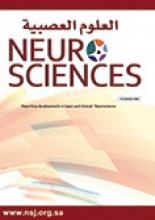Abstract
Echo planar imaging was initially introduced as a technique to reduce the magnetic resonance imaging exam to a single shot (snap-shot) acquisition, much like a conventional radiograph. This vision, of course, created a good deal of speculation about the clinical impact of an echo planar imaging-equipped magnetic resonance imaging device. From completing the entire magnetic resonance exam in a matter of seconds to expanding the applications field of magnetic resonance imaging into territories traditionally claimed by other modalities, the perceived potential of echo planar imaging was indeed great. It was not until this decade, however, that the technical challenges involved with developing echo planar imaging into a clinical tool have been overcome.
- Copyright: © Neurosciences
Neurosciences is an Open Access journal and articles published are distributed under the terms of the Creative Commons Attribution-NonCommercial License (CC BY-NC). Readers may copy, distribute, and display the work for non-commercial purposes with the proper citation of the original work.






